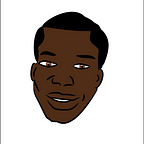Corner kicks can be mysterious but some are decodable
Imagine you’re watching Maddison take a corner for Leicester City vs Man City, and just before he does, he raises his left hand like this:
By raising his left hand, can you tell which zone he’ll target with his corner?
In this article, I analysed Man City to get a good understanding of how they use hand signals to communicate during corners. Using examples from Sounders MLS Cup Final game vs Toronto FC, I share how Key Stakeholders at Sounders FC such as the club's Manager, Brian Schmetzer can use that information in defending corners if both teams were to face each other in the Club World Cup right now (in an entirely different universe without COVID-19).
Understanding Corner kick Hand Signals
Corner kick takers use hand signals to non-verbally communicate with teammates on the receiving end of their corner.
Why it’s important for teams to understand Man City’s corner tendencies
During the 2018/19 EPL season, Man City led in the number of corners won and the number of direct corners taken.
They are also excellent at creating chances so any team they play against can expect to concede a lot of corners from deflected shots and challenges close to the end of the pitch.
How Sounders FC can prepare for a match where they’ll defend Man City’s Corners
In a game vs City, among many crucial adjustments, Sounders will need to successfully prevent Man City from converting corner kicks into shots or chances.
Specifically, they can create defensive strategies around specific Man City hand signals, to minimize the chances of conceding goals from corners.
Unpacking Man City’s hand signals
This analysis focused on Man City’s main corner takers during the 2018/2019 EPL Season — De Bruyne, Mahrez, Gundogan and Sane. Together, they took 76% of all corners City won during the season.
I find that they mainly use signals such as Right Hand Raised, Both Hands Raised and No Hands Raised. I focused on the most common signals which exclude two other signals they rarely use, that is, the Left Hand Raised and Hand on the Head.
An Observation: Man City’s Takers mainly use short corners when no hands are raised. With every other hand signal, It’s clear City focuses a lot on long corners:
Kevin De Bruyne
İlkay Gündoğan
Riyad Mahrez
Leroy Sané
Long Corners — Which zone does Man City target with their long corners when they use specific hand signals?
On the left, Cornerkick takers are more likely to go for the near post when they raise their right hand.
On the right, takers are more likely to go for the penalty spot when they raise both hands.
Short Corners — What then determines if they go short when no hands are raised?
With the No Hand Raised signal, they usually either go long or short so it's important to understand what drives their decision to sometimes go short when they use that signal.
After reviewing video footage, in 93% of these corners, there’s a player along the flank to execute their short corner routine. Meaning there is mostly an option of going short.
It also partly depends on the player providing short corner support. Man City are more likely to execute the short corner routine when De Bryune, Walker, Gundogan or Bernado Silva provides corner support. This further highlights the importance of De Bruyne and Gündoğan for City’s corner strategies.
However, support players such as Sané are more likely to serve as a decoy to attract players who anticipate him receiving the short corner, even though Man City rarely executes it when he supports. This can create a numerical advantage for Man City players in the 18-yard box, so some teams will set up defensively with this in mind.
When Man City executes the short corner routine
City takes some short corners quickly to create a 3 v 2 situation. This stretches the opponent's defensive setup and allows the 3rd Man City player to exploit space in behind the 2 opposing players. This 3rd player looks to make cutbacks into the box upon receiving the ball.
An example of Man City short routine executed vs Watford:
Another shot corner vs Wolves:
Recommendation for Seattle Sounders Coach, Brian Schmetzer if his team were to play vs Man City in the Club World Cup
For defending corners, Sounders combined the zonal and man-marking system in their game vs Toronto in the 2019 MLS Cup. They man-marked Toronto players around the penalty spot & the wing but placed 2 players at the near post. In response, Toronto’s offensive corner set up was similar to City’s where they placed a player close to the taker to provide short corner support. This similarity means it may be a good game to use for recommendations.
Key Decisions Brian Schmetzer has to make: How do we structure our defence vs Man City’s Corners?
Sounders can have training routines around making small adjustments to cover important zones in response to specific hand signals Man City make.
For instance, City is more likely to target the near post when they raise their right hand on the left. This means Sounders will be in a position to defend such a corner without much adjustments needed.
However, on the right, City takers are more likely to go for the penalty spot when they raise both hands. Sounders may shift one player just outside the penalty box, into it. This shift is easy to make in response to a hand signal and reduces the chance of conceding if indeed the ball goes in such an important zone. On the other hand, it makes it a little more difficult for Sounders to break on the counter-attack.
Thanks to Dan Altman for feedback while putting this together and to Opta who supported me with data.
Thanks for reading!
